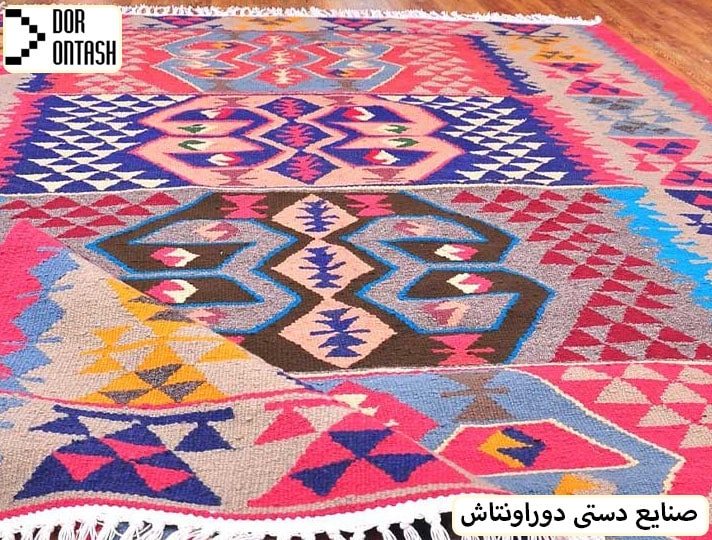Turkish handicrafts are very famous among thousands of tourists who travel to this country every year from all over the world. Also, Turkey is a country that has famous tourist cities and receives thousands of tourists from all over the world every year. This beautiful and fascinating country has a beautiful nature and a pleasant and pleasant climate. Istanbul has always been considered as a tourist city in Turkey and is perhaps the most touristic city in Turkey. Every year, many tourists from all over the world come to Istanbul, and one of the factors that attract tourists to Istanbul is buying amazing handicrafts in Istanbul. In Iran, many tourists consider Istanbul tour as one of their favorite travel tours.
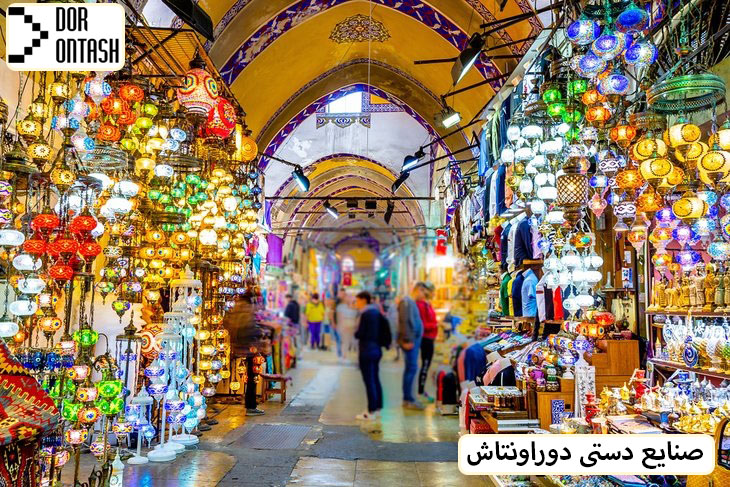
Istanbul Grand Bazaar
Handicrafts of Istanbul
In the handicrafts of Istanbul, you can see the traces of the rich culture and civilization of this country from the distant years of the Ottoman rule. These products have high cultural value and can be used for decoration because of their beauty and shape.
Istanbul is one of the cities of Turkey that has many cultural and recreational attractions, one of the reasons why many people are interested in Istanbul’s attractions and traveling to Istanbul is Istanbul handicrafts. Handicrafts in Istanbul are not the least of the handicrafts of the Islamic Republic of Iran and our country, and they are very diverse and different. It is better to get to know some of them and shopping centers in Istanbul.
Turkish carpet | Handicrafts of Istanbul
Istanbul is a central city in the heart of Turkey with many handicrafts that have attracted the attention of many people. The first handicrafts of Istanbul can be called carpets and carpet weaving, although we consider Iran to be the cradle of carpet weaving civilization, but Turkey is a country with very exquisite and interesting and attractive carpets that were designed privately for each person’s home in the past and by the lady of that house. It was woven and known.
When we see the word carpet, we always think of Iran handicrafts, but you should know that there are currently many stores that sell traditional and hand-woven carpets, and you can buy one of Istanbul’s handicrafts, which is very beautiful, attractive and in the world. It is famous to buy as a souvenir and buy for your home in Istanbul. Bring it to your home, which is one of the great souvenirs that you can spread in your home and get different types of it in different colors and models. Of course, as you know, the machine industry has created different designs and colors for carpets, but carpets are still produced manually, which have a special place.
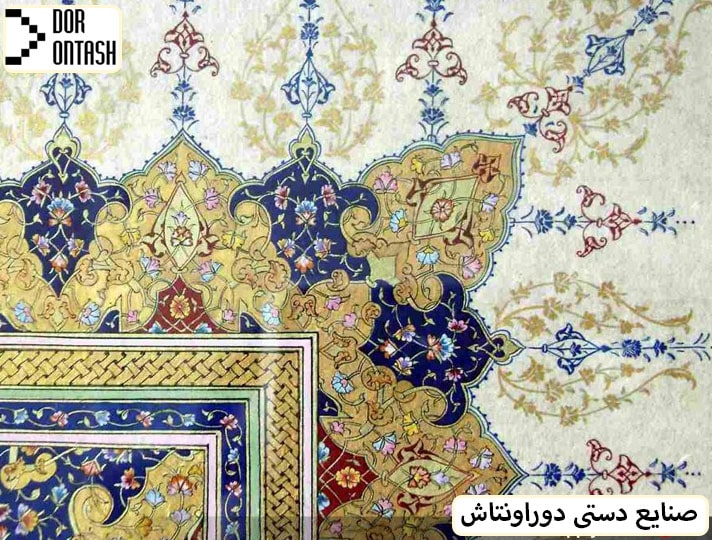 Turkish ceramics and tiles Handicrafts of Istanbul
Turkish ceramics and tiles Handicrafts of Istanbul
Turkish tile and ceramic art, which began in Anatolia, reached the highest level of technique and beauty during the Seljuk period, especially the Ottoman period. Other branches of ceramics are grouped into the art of tiling, brick and tile production.
Iznik ceramic tiles
In the 17th century, Iznik became an important tile production center of the Ottoman Empire. In the designs of these tiles, animals such as birds, fish, rabbits and dogs, human faces and ships were also often used. One of the most important characteristics of Iznik ceramic tiles in the 16th century is the color red, which is white watercolor except for green. , turquoise, black and white have been added. Red corals are one of the most obvious elements of this ceramic style in the 16th century.
Kathia ceramic tiles
After Iznik, Kütahya was the most important ceramic production center in the Ottoman Empire. These industries have a long history dating back to ancient times. In Quetta, ceramics with the same shapes as Iznik tiles were produced from the early 15th century. Because of the abundance of clay in this ceramic area, large quantities of Hellenistic, Roman, and Byzantine designs were made here, and the traditional methods of this art are still used today.
Canakkale ceramic tiles
From the end of the 17th century to the beginning of the 20th century, Canakkale was the area of production of authentic and beautiful works of art. Ceramics made of thicker red paste and orange beige paste are decorated with green, brown, dirty and yellow flowers. Brown, orange, orange, yellow, blue and white colors were used based on transparent glaze. Jars, vases, plates, glasses were common ceramics.
 Istanbul glass containers
Istanbul glass containers
Maybe you have seen very beautiful and attractive glass containers with different and varied colors and you have asked how these containers are so abundant in Turkey and how these containers are made with this special delicacy. Is there a special factory to make them? We have to inform you that another handicraft is glass containers.
Turkish soap
One of the best handicrafts of Türkiye is Turkish soap. This soap is very popular among Turkish people. Turkish soap is prepared with traditional and old methods that exist in Turkish culture, and its use is mostly in the traditional baths of this country. These soaps are no different in terms of quality and effect from chemical soaps that are common today.
Traditional Turkish soap is very effective in cleansing and exfoliating the skin. Another advantage of this soap is that it does not harm the skin and even makes it softer. An important point in using Turkish soap is that it should be left on the skin for about 10 minutes for a better effect.
Masonry in Türkiye Handicrafts of Istanbul
Among other handicrafts of Turkey, we can mention the art of stone carving, which leads to the creation of beautiful works of art and giving life to the stones with a lot of hard work and perseverance. This branch of art is not as popular in today’s life as it was in the past. And the art of masonry is mostly used in ornaments. However, today the art of masonry can be found in fields such as tombstones and architectural structures.
Turkish towel
Turkish towel is one of the most famous handicrafts in Türkiye. This traditional towel, which is very popular and one of the best-selling handicrafts in Turkey, can be purchased from various shopping centers in Turkey. Although these towels are thin, they absorb water very well and are sold in different designs and colors.
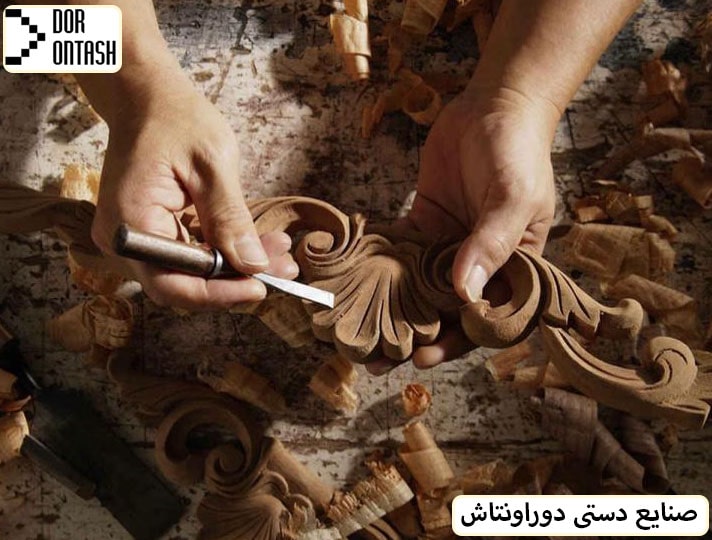 Carving in Türkiye
Carving in Türkiye
Carpentry is one of the oldest handicrafts, with its sub-branches such as carving, inlaying, saddle making and breast making, it has a very wide field of application. In Turkey, you can find a large number of works that have remained until today and include the most beautiful examples of carpentry. Carving is one of the most delicate and painstaking arts of human hands. Examples of this beautiful art can be seen in the mosques of Turkey, which are related to the Seljuk period.
Gilding in Türkiye
It is a collection of original and beautiful patterns that painters and artists used to make religious, cultural, historical books, poems and beautiful pieces of calligraphy more beautiful. The art of gilding is using gold and today it cannot be done widely because it is a very expensive job. In this art, flower motifs and symmetrical motifs are mostly used.
Turkish copper dishes
Copper art in Turkey, which dates back to 3000 BC, is still alive and well. Copper processing is one of the handicrafts of Turkey and has been in the center of Denizli for centuries. This art is the work of forging copper metal and turning it into various items that are generally used in the kitchen. The art of making copper vessels is seen as the most advanced art in the region. Turkish copper craftsmen produce not only kitchen utensils but also works of art such as lamps, lanterns and other decorative items. The art of making copper dishes still maintains its place in people’s lives with these tools.
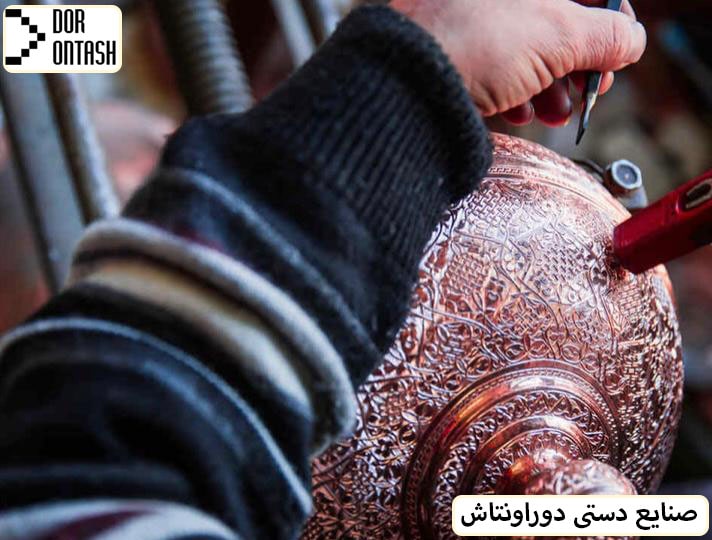 Marbling in Türkiye
Marbling in Türkiye
The art of marble, which is one of the handicrafts of Turkey, and whose reputation is beyond the borders of Turkey, can be described as painting on water. Marble, which is a unique handicraft with its applied methods and techniques, is a very interesting branch of ancient arts, which has always been welcomed both inside Turkey and abroad. For this reason, many training courses are held in Turkey to learn it, and it has maintained its popularity among many enthusiasts of all ages.
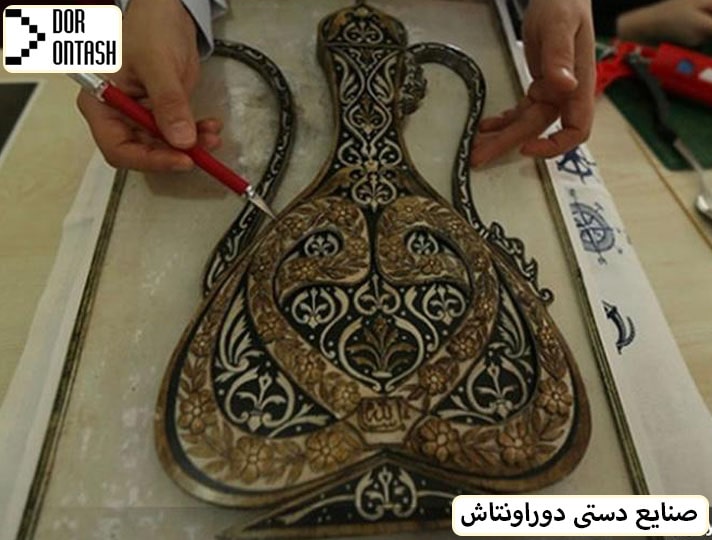 Turkish glassware
Turkish glassware
Glassmaking is another Turkish craft that has evolved over the centuries. Colored glasses in different models and shapes were made by the Seljuks. In the Ottoman Empire, after the conquest of Istanbul, this city became the center of glassmaking. The first production of bead glass for the evil eye was done by expert artisans in Izmir province. There is more than one technique in the art of glassmaking. But basically this art is known as the art of processing glass, shaping glass or adding color to glass objects.
Cross embroidery in Türkiye
The art of anti-rape sewing and embroidery, which has been popular for years, is one of the branches of art that has been passed down from grandmothers to their grandchildren as a cultural heritage. This beautiful art, which requires a lot of effort and patience, is sewing with colored threads on a special fabric called Etamine. This beautiful art can be seen in the design and production of clothes by tasteful designers.
Turkish leather, bone in Türkiye
The classification of handicrafts made of leather, fur, horn and bone is according to the materials used and the purpose of their use. Other types of handicrafts that can be added to this category are: making authentic leather shoes and napkins, bracelets, dolls, dishes and woolen handicrafts.
Introduction of wooden products in Turkey
Turkish wood products flourished during the Anatolian dynasty. Woodwork has its own unique characteristics and was first used for needs and not aesthetics. Wood engraving was used in architecture during the Seljuk period, and later in the Ottoman period, it was used in architecture and daily objects. The trees used for carving are walnut, apple, pear, cedar, ebony and crystal wood and are used as decorative techniques such as decoration, painting, carving, cast carvings.
Coppersmith in Türkiye
Another branch of handicrafts that is a thousand years old is coppersmithing, which due to the industrialization of human societies, the younger generation is not very familiar with it, the art of coppersmithing. In ancient Turkey, it was widely used for the production of decorative items, especially kitchen utensils.
 Engraving in Türkiye
Engraving in Türkiye
In other words, the art of engraving is gluing thin papers to each other and carving patterns on them. To do this art, you need delicate tools for cutting and carving. During the Ottoman period, this art was liked by both the people and the courtiers of the Ottoman Empire. Although this art is not very common today, it has its fans and many tourists, tourists and native people of Turkey welcome to buy it, especially as a souvenir.
Binding in Türkiye
When binding is mentioned, an activity like book binding may come to life in the minds of many people, which can be said to be not so wrong. This art is several thousand years old, and the writings and works of that time were covered with protective covers to prevent them from being scattered and damaged. In the Ottoman Empire, sheep, goat or gazelle skins were generally used to cover books. In addition, it was decorated with silk thread or gold, with different special decoration techniques. Of course, due to the advancement of technology and the development of printing, today this art is not as common as in the past.
Miniature art in Türkiye
Miniature art, which can safely be called one of the most common handicrafts, has made great progress with the acceptance of Islam in this region. At that time, those who did miniature art were called Nekkash. Because they generally had a vision of social events in their works. The art of miniature requires the creativity and elegance of Nekkash master, and the name of a great master is visible in the history of this country.
Pottery in Türkiye
The art of pottery, which is based on shaping clay in a very creative way, has been widely used in the past to prepare dishes at home. But nowadays this beautiful art is more preferred as a valuable souvenir. Therefore, although the art of pottery is not as popular as in the past, it can be claimed that pottery is still one of the parts of many houses. This is the reason why the profession of pottery is flourishing in many regions of Turkey, and the effort to transfer this valuable art to new generations continues, and the diversity in the shape of the products and their beautiful colors make them valuable souvenirs.
Embroidery tour in Türkiye
The art of net embroidery is very similar to the art of knitting with different techniques with colored threads and various designs along with tools such as hooks and shuttles. This art is more common among women. Embroidery is used to decorate curtains, bed edges, ornaments and clothes. Famous patterns have been remembered from the past, which can be called spider, goose nest, railway and fist.
Turkish rug
Turkish rugs are one of the most popular and oldest handicrafts of this country, which are usually used as covers for cushions and pillows. Turkish rugs attract everyone’s eyes with their beautiful designs and colors. Some people believe that all the carpets in the market are machine-made, and hand-woven carpets are not easily found in the market. But you can find handmade Turkish rugs with a little searching in markets, especially old markets in Turkey.
Weaving in Türkiye
Due to the nomadic lifestyle, the nomadic Turks used weaving a lot to produce items such as tents, clothes, carpets and rugs. In fact, weaving can be mentioned as one of the most rooted handicrafts. The art of weaving, which has undoubtedly had a significant impact on human culture and clothing throughout history for thousands of years, we must pass on this valuable art to future generations. For this purpose, the Turkish woven fabric map project, which was implemented under the supervision of Amina Erdogan, the wife of Turkish President Recep Tayyip Erdogan, is a very important step to keep Turkish weaving culture alive. Based on this, in order to transfer the history of weaving to future generations, local fabrics produced by traditional methods have been protected and supported. It is also considered that by supporting the mentioned project, the local weaving methods and the original designs of these fabrics to the industry, this project will be very beneficial and will contribute significantly to local development and cultural diplomacy. Among the most important attractions of Turkish handicrafts, we can mention Turkish rugs and carpets, which have gained many fans among tourists.
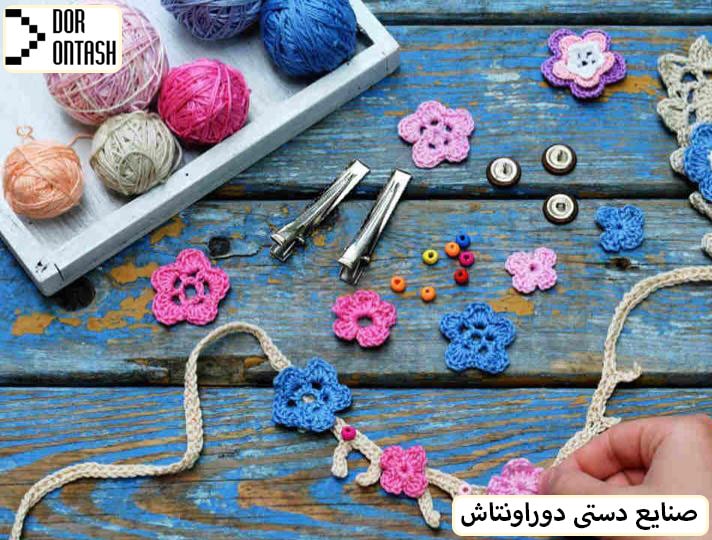 Istanbul handicrafts market
Istanbul handicrafts market
Istanbul has one of the largest and oldest covered markets in the world. Built in the 15th century, the Grand Bazaar covers an area of approximately 55,000 square meters and houses more than 3,000 shops and stalls. Istanbul’s Handicrafts Market is a cultural icon and has been home to thousands of merchants and artisans for hundreds of years. Getting lost in the color and culture of the Turkish Grand Bazaar is a truly mesmerizing experience. Thousands of stalls and small shops display unique items from the past and Turkish handicrafts. Istanbul’s Grand Bazaar is a wonderful historical place where you can not only shop, but also spend a good day strolling through its lively streets, among the colorful shops and the enticing smell of spices.
History of Istanbul Grand Bazaar
The Grand Bazaar of Istanbul was built by the order of Sultan Muhammad or Mehmet II. He, who was the conqueror of Istanbul, ordered to build the bazaar on the ruins of a bazaar from the Byzantine Empire. At that time, only textiles and jewelry were sold in the market. With the rise of the Ottoman government, Istanbul’s market also prospered. All kinds of goods such as spices, sandals, dishes, etc. were traded in this market. The Grand Bazaar of Istanbul reached its peak of prosperity in the 17th century. The Grand Bazaar of Istanbul was located on the Silk Road and was the main link between East and West. It can be said that this market was known as the economic hub of the Mediterranean in the 17th century.
Markets have always been one of the main pillars for the administration of a government, that’s why the Istanbul Grand Bazaar survived despite many ups and downs. When the Turkish government focused on the tourism industry in the 90s, the number of shops in the big bazaar was also increased. Many of these shops sell attractive goods for tourists. For example, goods such as handicrafts, souvenirs for Istanbul, etc. are encouraged to buy.
Parts of Istanbul Grand Bazaar
First, we must say that the Grand Bazaar has 4 entrances. The names of the streets are known by the type of goods of the shops, for example, the market of shoe sellers, the market of carpet sellers, etc. Also, since the market is covered, even during the day, sunlight does not reach it to a large extent. The most important parts of the Istanbul market are listed below:
Bags and Shoes
All kinds of modern and traditional bags and shoes are sold in Istanbul Grand Bazaar. If you search a little in this market, you can also find traditional shoes from the Ottoman and Seljuk eras.
Natural leather clothing
One of the most famous hand-embroidered leather clothes belongs to Turkey. A part of Istanbul Grand Bazaar is dedicated to selling natural leather shoes and clothes. Some of these items are handmade and some are industrial.
Carpets and rugs
In a part of Istanbul Grand Bazaar, you can see traditional and modern Turkish rugs and carpets. Many of these carpets are hand-woven in cities and villages around Istanbul. The art of carpet weaving in Turkey has a very long history.
Spices and herbal medicines
Turkish spices are very popular and you can also find Indian and Arabic spices in Istanbul’s Grand Bazaar. In addition to these, all kinds of Turkish teas can be found in the Istanbul Grand Bazaar. The interesting thing about the spices section is that it dates back to the 15th century.
Antiques and antiques
The most attractive part of Istanbul Grand Bazaar is related to antiques. You can see all kinds of antiques in the shops of this section. Even if you don’t intend to buy, looking at old things is fun.
Handicrafts and souvenirs section
In this part of Istanbul Grand Bazaar, all kinds of handicrafts of Turkey are sold. Goods such as rugs, gilding, miniatures, wooden items, calligraphy, etc. can be seen in the handicraft section. There are also small and large stores in this section that offer rhinestones, decorative objects, etc., which are suitable as souvenirs.
Buy from Istanbul Grand Bazaar
The sellers of the Istanbul Grand Bazaar are among the most rude sellers in the world. If some sellers notice that you have money with you or want to buy a souvenir, they will urge you to buy until you finally agree. You can bargain and get discounts in this big market. In fact, it is very common to get a discount from the vendors of Istanbul Grand Bazaar. If you do not agree with the seller’s price, simply leave the store. As we mentioned in the beginning, the visitors of this market include tourists and locals. If you want to get to know the culture of Istanbul, be sure to visit Istanbul Grand Bazaar.
When should we go to Istanbul Grand Bazaar?
Although Istanbul Grand Bazaar is covered, you should know that the weather conditions affect the market. For example, in the summer season when the weather in Istanbul is hot and humid, the air in the bazaar becomes annoying. Also, when it rains heavily, the streets of the Grand Bazaar are filled with water.
The best time to visit Istanbul Grand Bazaar is June, May, September and October.
If you want to buy souvenirs at a reasonable price, Istanbul Grand Bazaar is a good option.
Working hours of Istanbul Grand Bazaar
Every day from 9 am to 9 pm
The market is not open on public holidays.
Istanbul Grand Bazaar address
Istanbul, Fatih district, Bayazid quarter
The best souvenirs in Istanbul
Istanbul can be defined as the culture and fashion capital of Türkiye. There are many modern and world-class shopping malls, traditional shops and neighborhood markets in Istanbul. In Istanbul, there are shopping opportunities for every budget. If you want to buy souvenirs in Istanbul, places like Grand Bazaar and Spice Bazaar are full of shops and stalls selling everything. Next, we will introduce you the best souvenirs to buy in Istanbul.
Turkish souvenirs
Arguably one of the most famous things to buy in Turkey are the Turkish sweets that you can bring home from your travels. You can find many delicious Turkish sweets in Istanbul Grand Bazaar. If you like the taste of Turkish food during your trip, a hearty recommendation is to buy spices to enjoy it again when you get home. If you’re looking for Turkish homeware that doubles as a souvenir, traditional ceramic plates, bowls or mugs are great things to buy in Turkey. Cooper coffee sets are very popular in Türkiye. I recommend you go for one of these as it is one of the most practical souvenirs of Turkey. Turkish rugs, also known as Anatolian rugs, make wonderful souvenirs, however, buyers should be smart as some markets sell fake and machine-made versions.
Selling Iranian handicrafts in Türkiye
Global inflation and recession has created a better market for Iranian handicrafts in Asian and Arab countries outside the Iranian market. The works of various branches of traditional Iranian art, including turquoise painting, penmanship, calligraphy, enameling, and Iranian carpets, are available for sale in some stores in Istanbul. In some Turkish exhibitions, beautiful examples of traditional Iranian handicrafts are displayed for visitors. These exhibitions are mostly promotional and its purpose is to introduce our handicrafts to the people of other countries. Along with Iranian handicrafts, paintings describing the historical works of Iran are also displayed in this exhibition. Istanbul handicrafts

